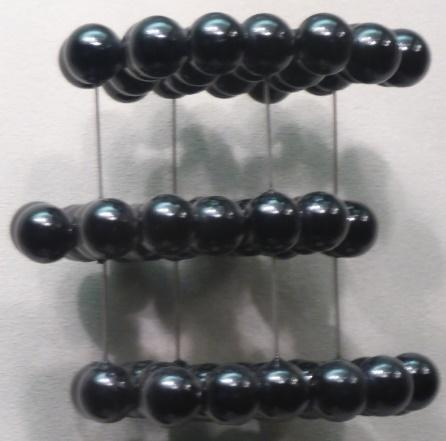Question
Question: The carbon-carbon bond length in graphite is A.\(1.34A^\circ \) B.\(1.54A^\circ \) C.\(1.42A^\...
The carbon-carbon bond length in graphite is
A.1.34A∘
B.1.54A∘
C.1.42A∘
D.1.20A∘
Solution
The usual C−C single bond length is 1.54A∘. The carbon-carbon bond length in graphite will be less than this usual bond length due to some reasons which will be discussed further in this solution. Graphite is a hexagonal layered structure in which each carbon has sp2 hybridization.
Complete step by step answer:
The actual C−C single bond has a length of 1.54A∘ but in graphite each carbon atom is bonded to three other carbon atoms that form layers in a hexagonal manner.
Now, you might wonder why its bond length is not the same as a single C−C bond, the answer is that each carbon in graphite has a non-bonded electron which can delocalize through the structure. The hybridization of carbon in graphite is sp2 so one p orbital is available for the delocalization of electrons. So, the bond length will be less than that of usual C−C single bond (1.54A∘) and becomes 1.42A∘.
So, the right option is C that is 1.42A∘.
Additional information:
The delocalized electron allows a free movement of electrons through the entire structure which makes it able to conduct electricity. So graphite is a good conductor. And also the layers in graphite structure can slide over due to its weak forces of attraction. This makes graphite a good lubricant because of its slipping nature.
The graphite structure is as follows,

Note:
Note that the bond length of diamond is 1.54A∘ which is a usual C−C single bond length. Here, in graphite due to delocalization it gets decreased, So, don’t be confused with the two values. And 1.34A∘ is the C=C double bond length so the real answer will be also more than this value.
